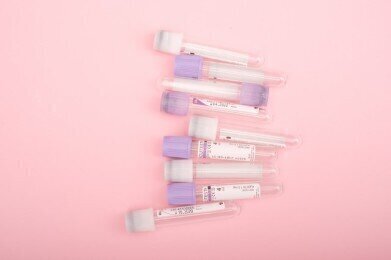Sample collection, storage, and transportation requirements for common experiments
1: Collection and preservation of pathological specimens:
1) Frozen section: Take appropriate tissue blocks and store them in liquid nitrogen;
2) Paraffin section: Take appropriate tissue blocks and store them in 4% paraformaldehyde;
3) Cell crawling: The cell crawling was fixed with 4% paraformaldehyde for 30 minutes and then immersed in PBS at 4 ℃ for storage.
2: Collection and preservation of molecular biology specimens:
1) Fresh tissue: Cut the specimen and store it in liquid nitrogen or -80 ℃ refrigerator;
2) Paraffin specimens: stored at room temperature;
3) Whole blood sample: Take an appropriate amount of whole blood and add it to EDTA or heparin anticoagulant blood collection vessels;
4) Body fluid specimens: high-speed centrifugation for precipitation;
5) Cell specimen: After cell lysis with TRIzol, store in liquid nitrogen or -80 ℃ freezer.
3: Collection and preservation of protein experimental specimens:
1) Fresh tissue: Cut the specimen and store it in liquid nitrogen or -80 ℃ refrigerator;
2) Whole blood sample: Take an appropriate amount of whole blood and add it to EDTA or heparin anticoagulant blood collection vessels;
3) Cell specimen: After sufficient cell lysis with cell lysate, the cells are stored in liquid nitrogen or -80 ℃ freezer.
4: ELISA, radioimmunoassay, and biochemical experiment specimen collection and preservation:
1) Serum (plasma) sample: Take whole blood and add it to a coagulation promoting tube (anticoagulant tube).
Centrifuge at 2500 rpm for about 20 minutes, collect the supernatant, and store it in liquid nitrogen or -80 ℃ freezer;
2) Urine sample: Centrifuge the sample at 2500 rpm for about 20 minutes, and store it in liquid nitrogen or -80 ℃ freezer;
Thoracic and abdominal fluids, cerebrospinal fluid, and bronchoalveolar lavage fluid shall be implemented in accordance with this standard;
3) Cell samples: When detecting secretory components, centrifuge the sample at 2500 rpm for about 20 minutes, and store it in liquid nitrogen or -80 ℃ freezer; When detecting intracellular components,
Dilute the cell suspension with PBS and repeatedly freeze thaw to destroy the cells and release intracellular components. Centrifuge at 2500 rpm for about 20 minutes and collect the supernatant as above;
4) Organizational sample: After cutting the specimen, weigh it and store it in liquid nitrogen or -80 ℃ freezer for future use.
5: Collection of metabolomics specimens:
1) Urine sample: Centrifuge the sample at 2500 rpm for about 20 minutes, and store it in liquid nitrogen or -80 ℃ freezer;
Thoracic and abdominal fluids, cerebrospinal fluid, bronchoalveolar lavage fluid, etc. shall be implemented in accordance with this;
2) After cutting the tissue sample, weigh it and store it in liquid nitrogen or -80 ℃ freezer for future use;


No responses yet